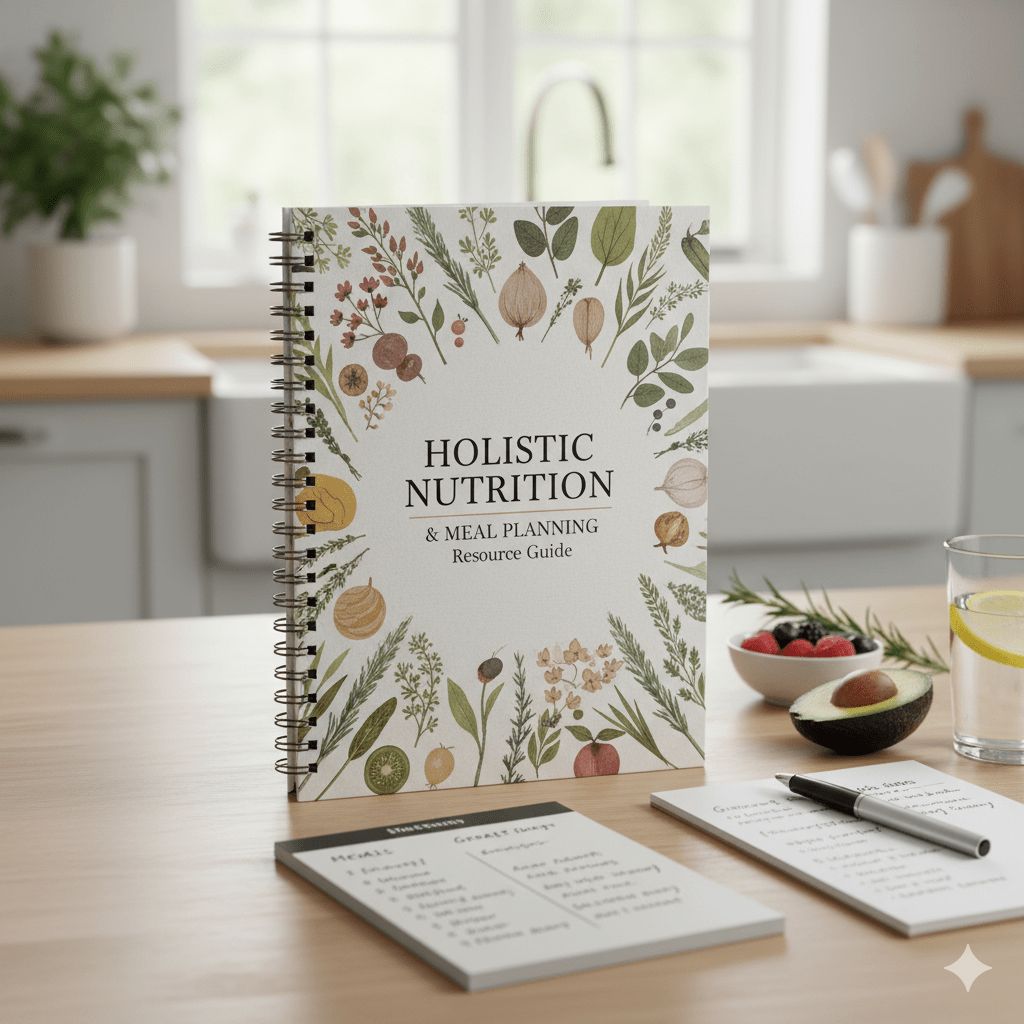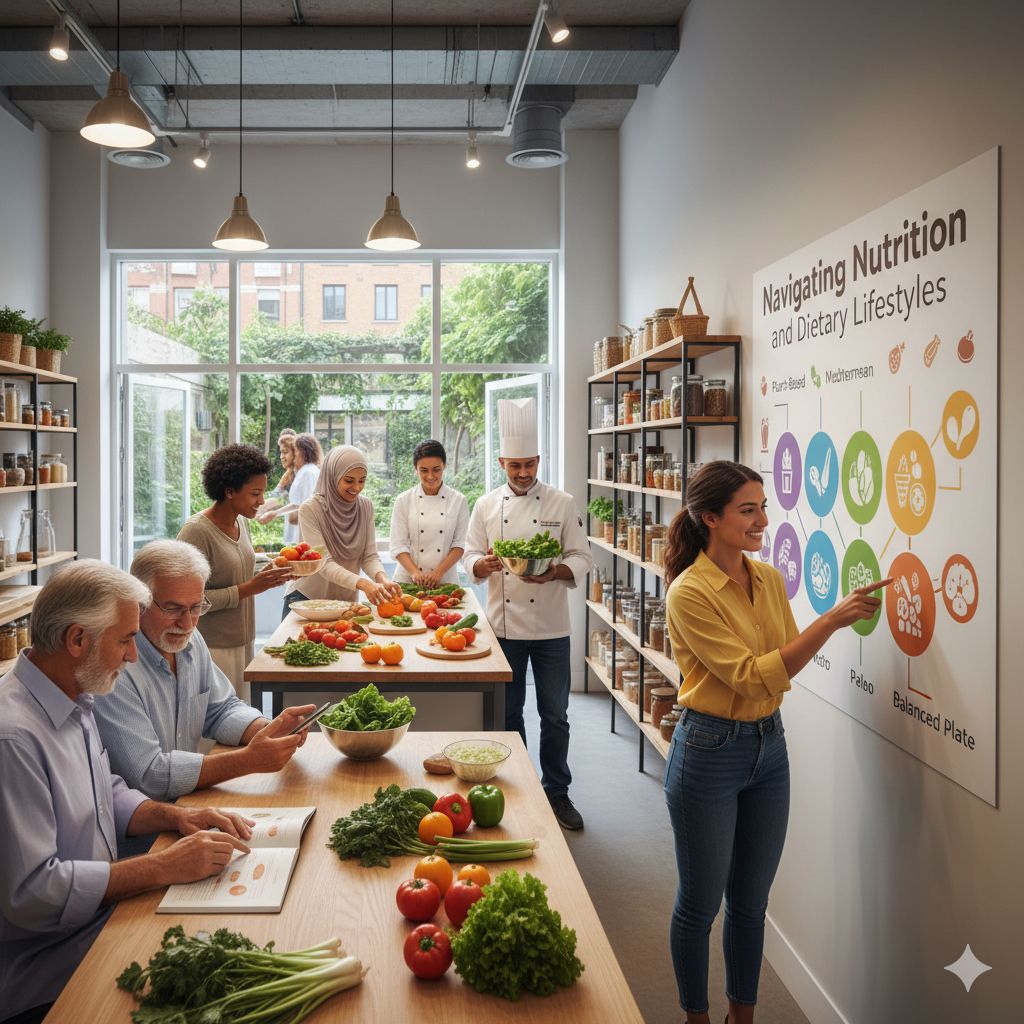- Ark's Newsletter
- Posts
- 5 Things a Vegan Blogger, a Government Scientist, and a Planner Taught Us About Food
5 Things a Vegan Blogger, a Government Scientist, and a Planner Taught Us About Food
1.0 Introduction: The Noise and the Signal
If you’ve ever tried to figure out how to eat healthier, you’ve likely been buried in an avalanche of advice. The internet, bookstores, and social media are saturated with tips, rules, and diet plans that are often confusing and frequently contradictory. One expert tells you to cut carbs, another to load up on them. One diet is defined by what it excludes, while another champions a specific “superfood.” It’s a landscape of noise that makes it difficult to find a clear signal.
What happens, however, when you step back from the specific prescriptions and look for the foundational principles that cut across vastly different approaches to food? This article does just that. We synthesized insights from three completely unrelated sources: a popular lifestyle blog with a 101-item vegan grocery list, the comprehensive “Dietary Guidelines for Indians” from the National Institute of Nutrition, and a collection of simple meal planning tools.
We’re not just comparing them; we’re layering them to see what powerful, unified message emerges when a personal philosophy, a scientific doctrine, and a practical tool are forced to speak with one voice. What do these disparate guides agree on? The answers challenge common assumptions and point toward a more fundamental and refreshingly simple way to think about food.

2.0 You’re Probably Getting Too Much Protein, Not Too Little
A primary anxiety for anyone considering a dietary change, especially a shift toward plant-based eating, is whether they will get enough protein. This concern is so common that it’s often the first question people ask. However, a deeper synthesis of lifestyle advice and scientific guidelines reveals a fascinating truth: the anxiety itself may be the biggest problem.
A popular vegan blog, “Vegan Anj,” directly confronts this myth by referencing analysis from Forks Over Knives that cites a study from the Journal of the Academy of Nutrition and Dietetics, which found that, on average, vegans get 70% more protein than they need every day. The blog concludes with a powerful and definitive statement on the matter:
The point being, the main nutritional concern people have with veganism surrounding a lack of protein is actually a non-issue.
But here is where the signal gets lost in the noise. In the very same article, the author includes a prominent section titled “The Best Vegan Protein Powders (with discounts)!” and details her personal morning smoothie routine that “packs anywhere from 40 to 53 g of protein” using supplements. This contradiction is a perfect real-world example of how cultural pressure overrides scientific fact. The author knows intellectually that protein isn’t a concern, yet the pressure to supplement is so strong that she still participates in and promotes it.
This cultural trend runs directly counter to official scientific advice. The “Dietary Guidelines for Indians” states that the recommended dietary allowance (RDA) for protein is 0.83 g per kilogram of body weight per day, an amount most people easily get from food alone. More importantly, the guidelines issue a warning not about deficiency, but about excess. The report notes that protein intake greater than ~1.6 g/kg/day does not contribute further to muscle gain and cautions that prolonged intake of high amounts of protein, particularly from supplements, is associated with “bone mineral loss.” The scientific warning against excessive protein isn’t just a theoretical risk; it’s a direct counterpoint to the exact behaviors being promoted—even subconsciously—by lifestyle influencers.
3.0 “Balanced Diet” Means Including More, Not Excluding
Many modern diets are defined by what they eliminate. A vegan diet, for example, is built on the principle of excluding all animal products. This approach frames healthy eating as a process of subtraction.
In stark contrast, the “Dietary Guidelines for Indians” defines a balanced diet not by what is excluded, but by what is included. The scientific report states that a balanced diet is achieved by “judiciously choosing a variety of foods from different food groups.” It emphasizes the active pursuit of diversity, providing a clear, actionable metric for achieving it: consume foods from at least 5-7 different food groups on a daily basis.
This reframes the entire concept of healthy eating. It suggests the goal isn’t just avoiding “bad” things but actively seeking out good ones. At first, this seems to contradict an exclusionary diet like veganism. But when you layer the sources, a new insight emerges. The “Vegan Anj” blog presents an enormous “101+ Vegan Grocery List” spanning fruits, vegetables, nuts, seeds, legumes, and grains. This isn’t just a shopping list; it’s a practical demonstration of how a diet defined by exclusion (no animal products) can still achieve the scientific principle of inclusion and food-group diversity. The real takeaway is that a healthy diet is less about a single rigid rule and more about the positive goal of building a plate that reflects a wide variety of sources.

4.0 The “Healthy Food” Aisle Is Full of Traps
Walking down the grocery aisle, it’s easy to be drawn in by packages that scream “healthy.” But according to government scientists, many of these foods are nutritional traps. The “Dietary Guidelines for Indians” warns against the rise of ultra-processed foods (UPFs) and foods high in fat, sugar, and salt (HFSS). These products are engineered for palatability and long shelf life, are typically ready-to-eat with minimal additional preparation, and are often stripped of fiber and micronutrients. Their regular consumption is directly linked to overweight/obesity and an increased risk of non-communicable diseases.
The report calls out a number of misleading label claims that can deceive consumers. Terms like ‘all natural’ are used loosely, ‘made with whole grain’ doesn’t mean a product is primarily whole grain, and ‘sugar-free’ foods can be loaded with fats and refined flours that add calories. The scientists offer a crucial insight that cuts through the marketing noise, stating that adding micronutrients back into a fundamentally unhealthy product doesn’t fix the core problem.
If the foods are ultra-processed or high in fat/sugar/salt, then enriching them with nutrients or fortifying them cannot make them wholesome or healthy.
This empowers consumers to look past buzzwords and focus on the ingredient list. But it also highlights the need for a practical defense. This is where our third source comes in. A key reason people fall for these traps is making impulsive decisions in the store. Using a meal planner and a pre-written grocery list, as suggested by the planning tools from OnPlanners.com, serves as the first line of defense against the powerful marketing of HFSS foods.

5.0 Information Isn’t Action: The Missing Link is a Plan
Having good information is the first step, but it is not the last. The vegan blog offers a list of over 101 grocery items. The “Dietary Guidelines for Indians” contains 17 detailed guidelines with extensive tables and recommendations. Both are treasure troves of nutritional knowledge, but the sheer volume can be paralyzing. Knowing what to eat is one thing; consistently preparing and eating it every day is an entirely different challenge.
This is where the third, non-nutritional source provides the most practical insight. The website OnPlanners.com, which offers simple organizational tools, identifies the crucial link between information and action: a plan. As the site’s introduction notes, “Planning can make your life easier and help you avoid impulsive purchases.”
Simple tools like weekly or monthly meal planners are designed to bridge the gap between knowing what constitutes a healthy diet and actually executing it. For busy people, these templates help organize meal prep, streamline the creation of shopping lists, and remove the daily stress of deciding what to cook. This seemingly simple point may be the most impactful of all. Without a system to implement nutritional knowledge, the best advice in the world remains just advice.

6.0 Conclusion: From Information to Intention
When viewed together, the guidance from a vegan blogger, government scientists, and a simple planner converges on a set of clear, foundational principles. Healthy eating isn’t about finding a single, perfect, and restrictive diet. Instead, it’s about embracing food diversity, prioritizing nutrient-dense whole foods over ultra-processed products, understanding that more protein isn’t always better, and, most critically, having a practical plan to turn good information into consistent daily action.
These insights shift the focus from chasing complicated rules to building simple, intentional habits. They remind us that the most effective path to better health may not be found in the next diet trend, but in the deliberate and organized application of a few timeless principles. Looking at your own routine, what is the one small planning step you could take this week to turn your nutritional knowledge into consistent action?